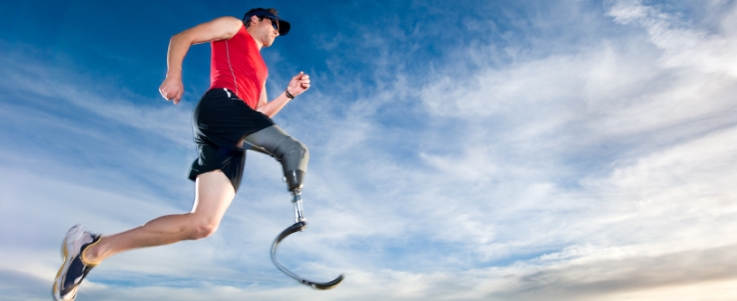Othotics is the evaluation, fabrication, and custom fitting of orthopedic braces, known as “orthoses.” Orthotics combines knowledge of anatomy and physiology, pathophysiology, biomechanics, and engineering.
ORTHOTICS & PROSTETICS
ORTHOTICS
Orthoses are externally applied devices used to modify the structural and functional characteristics of the neuromuscular and skeletal system. An orthosis may be used to:
Orthotic patients need external support to a part of the body because of neuromuscular or skeletal conditions such as cerebral palsy, scoliosis, spina bifida, traumatic brain injury, stroke, plagiocephaly, multiple sclerosis, sports injuries, and back strain. Other patients may require orthoses because they have foot conditions as a consequence of diabetes, high or flat arches, or repetitive stress.





PROSTHETICS
Prosthetics is the evaluation, fabrication, and custom fitting of artificial limbs, known as “prostheses.” Prostheses enhance the function and lifestyle of persons with limb loss. The prosthesis must be a unique combination of appropriate materials, alignment, design, and construction.
Lower-limb prostheses might address stability in standing and walking, shock absorption, energy storage and return, cosmetic appearance, and even running, jumping, and other athletic activities. Upper-limb prostheses might address reaching and grasping, occupational challenges including hammering, painting, or weight lifting, and activities of daily living like eating, writing, and dressing.
Prosthetic patients may have been born with limb deficiency or have experienced amputation due to trauma, cancer, infection, or abnormalities in blood vessels or nerves.
Many who are unfamiliar with the orthotics and prosthetics profession may not be aware of the technological advancements being made in the development of O&P devices. Improved materials and technologies are enabling many individuals with disabilities to return to activities they previously enjoyed.
Custom fabricated and custom fitted prostheses and orthoses require high strength and low weight. Accordingly materials originally developed for aerospace applications are often utilized in the fabrication of prostheses and orthoses. Advancements in technology continue to improve patient care outcomes. Technological breakthroughs such as electronic knees and computer imaging are changing the way orthoses and prostheses are enabling patients to fulfill their potential.
Materials used in each device depend on the weight of the user, their desired activities and their personal preferences. Flexible polymers provide increased comfort for patients. Carbon fiber, Kevlar and titanium are all used for reducing the weight and increasing the strength and durability of the device.
Computer-aided design/computer-aided manufacturing (CAD/CAM) technology is increasingly being used to help design and fabricate models from which orthoses and prosthetic sockets are produced. Measurements can be scanned in by laser or by using a special hand-held wand. This information describing the size and shape of the limb allows the prosthetist-orthotist to design the device for the patient by using the computer. Now the design can be downloaded to an automated carver to make the orthosis or prosthesis.
Many arm prostheses have electrically powered hands and elbows. Simple switches may be used to control these, but it is also possible to use sensors on the skin to detect signals generated by muscles (myoelectric signals) to control the prosthesis. In some instances microprocessors are used in analyzing and processing the myoelectric signals. Users of this kind of “bionic arm” can have both the delicate touch to pick up an egg and the strength to grasp a heavy object.

Electronic knee joints for prostheses can now be programmed for the individual patient. A computer chip allows the knee joint to sense changes in position, speed and force, enabling patients with amputations to walk down stairs and hills with confidence. There are prosthetic feet made especially for running, golfing, or swimming. Orthoses can be made with patterns and colors to make wearing them more fun for children.

